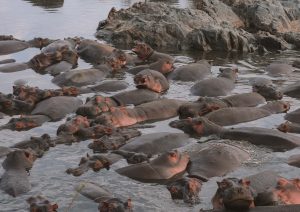What gear do I need to climb Kilimanjaro?
Climbing Mount Kilimanjaro, the highest peak in Africa, requires careful preparation and the right gear to ensure a safe and successful ascent. Here’s a list of essential climbing gear for Kilimanjaro:
- Footwear:
- Sturdy, comfortable hiking boots with ankle support and a good tread.
- Gaiters to protect your legs and boots from dust, scree, and snow.
- Clothing:
- Moisture-wicking base layers for both upper and lower body.
- Insulating layers (fleece or down jacket) for warmth in cold conditions.
- Waterproof and windproof jacket and pants (Gore-Tex or similar).
- Lightweight and breathable trekking pants and shirts.
- Thermal gloves and a warm hat for cold temperatures.
- Sun hat with a brim for sun protection.
- Backpack:
- A comfortable backpack with a capacity of at least 40-50 liters for carrying your essentials.
- Sleeping Gear:
- Sleeping bag suitable for sub-zero temperatures.
- Sleeping pad for insulation from the cold ground.
- Trekking Poles:
- Adjustable trekking poles for stability and to reduce strain on your knees during descents.
- Technical Gear:
- Crampons (if trekking during the snowy season).
- Ice axe (if trekking during the snowy season).
- Harness and carabiners (if required by your chosen route).
- Headlamp:
- With extra batteries for early morning and night climbs.
- Sunglasses:
- UV-protective sunglasses with side shields to protect from snow glare.
- Water and Hydration:
- Water bottles or a hydration system with a capacity of at least 3 liters.
- Water purification tablets or a water filter.
- Medical Kit:
- Basic first aid kit including blister treatment, pain relievers, and any personal medications.
- Sunscreen and Lip Balm:
- High SPF sunscreen and lip balm to protect from the strong UV rays at high altitudes.
- Toiletries:
- Toilet paper, hand sanitizer, and personal hygiene items.
- Documents:
- Passport, permits, and any required documentation.
- Camera:
- If you enjoy capturing memories, bring a camera with extra batteries.
- Snacks:
- High-energy snacks like energy bars, nuts, and dried fruits.
It is imperative that you ascertain the exact needs of your selected Kilimanjaro climbing route and speak with your tour operator about any recommended extra equipment before starting your climb. Furthermore, be sure you’ve adequately acclimated and are physically ready for the demanding conditions and altitude.






